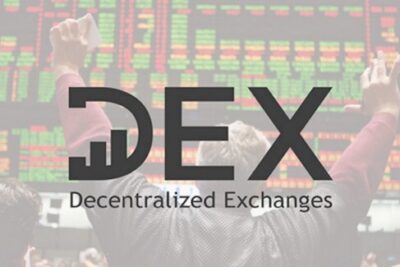

What Is Cefi In Crypto? The Ultimate Explained For Newbies
27 April 2022
What Is CeFi? Because consumers are often ignorant of the underlying regulations or obligations that govern financial assets and products, the conventional centralized finance (CeFi) ecosystem may look perplexing to them.
Cryptocurrency catalyzed the global adoption of a host of new blockchain-based financial applications. CeFi looks to have entered dangerous seas with the launch of Cryptocurrency. However, a new fashion trend dubbed DeFi has emerged (Decentralized Finance). It has garnered much attention since its introduction.
Due to the underlying integrity-protected blockchain and higher financial asset returns than CeFi systems, DeFi is establishing a reputation as an ecosystem that provides transparency and control. Additionally, the broad range of applications that blockchain technology enables has piqued learners’ interest in learning blockchain technology.
Via the following article, bePAY will show you What Is CeFi?, some CeFi examples, as well as compare and contrast CeFi and DeFi in a variety of ways. But first, we’ll first know these concepts.
- What is CeFi In Crypto?
- What Is DeFi In Crypto?
- CeFi Vs DeFi – In Comparison
- Risks Involved With CeFi
- Top Best CeFi Platform On Market
- FAQs About CeFi
- Closing Thoughts
What Is CeFi In Crypto?
Prior to the introduction of DeFi, Centralized Finance (CeFi) was the de facto norm for crypto trading. It has considerable influence on the cryptocurrency business. All crypto trading orders are processed by a central exchange in CeFi. The funds are administered by a single entity that operates the central exchange. That is, you do not own a private key that enables you to access your wallet.
Additionally, the exchange specifies which currencies are available for trading and the costs associated with trading on its platform.
To summarize the notion of CeFi, when you purchase or sell cryptocurrencies via a centralized exchange, you do not own them. Additionally, you are bound by the regulations imposed by a centralized exchange. Additionally, you are bound by the centralized exchange’s regulations.

What Is CeFi In Crypto?
>> Read Also: What Is A CEX? The GateWay That Ease Users To Cryptocurrency World
CeFi Vs DeFi In Comparison
What Is DeFi In Crypto?
Decentralized finance (DeFi) is a new financial system based on distributed ledgers similar to those used by cryptocurrencies, such as Bitcoin. There is no control over money, financial commodities, or financial services in the system.
Blockchain-based financial transactions are known as DeFi. To put it another way, it’s an independent financial service. The middleman in the traditional financial system is replaced with a smart contract in this system. Traditional banking services are combined with blockchain technology, which is another way of saying the same thing in layman’s terms.

What Is DeFi in Crypto?
>> Read Also: Cryptocurrency Explained: What Is DeFi And How Does It Work?
Similarities Between CeFi Vs DeFi
DeFi and CeFi are similar in that they both include financial services. Often, the end-user is unaware that a crypto service is based on a DeFi or CeFi infrastructure. As of right now, both CeFi and DeFi provide the same set of monetary services, including spot trading, derivatives, margin trades, borrowing and lending, payments, and the generation of stablecoins.
In terms of trading, both the CeFi and DeFi systems can offer simple interfaces that make onboarding newcomers straightforward.
Frequently, the same individuals and organizations work on both CeFi and DeFi initiatives. After all, both movements promote the adoption of blockchain technology and digital currency.

Same Traits Of CeFi and DeFi
Differences Between CeFi Vs DeFi
While the essential aims of both movements are the same – to increase the adoption of decentralized ledger technology (DLTs) – some key distinctions separate CeFi Vs DeFi into two distinct universes. In terms of major differences, the following are the most important:
The Sustainability
As previously stated, CeFi projects are managed by a single organization or set of businesses that oversee all commercial operations. Whereas the majority of DeFi initiatives are developed by diverse groups of individuals and organizations, the resultant platforms are administered by communities through unique processes.
Any DeFi project would attempt to replicate the decentralization of Bitcoin or any other public blockchain, however, the consensus methods would vary.
Certain DeFi initiatives provide governance tokens that give holders the ability to participate in decision-making processes. The compound is an example of a governance token that surged in value over the summer of 2020. (COMP).
Features
CeFi and DeFi services each provide a distinct set of functions. For instance, the majority of CeFi initiatives include custodial solutions and specialized customer support teams, which are not often accessible in DeFi.
On the other hand, trade on DeFi platforms takes place on the blockchain, since no central authority is engaged. This is feasible because of a number of significant characteristics, including automated market-making (AMM), liquidity pools and yield farming, as well as non-custodial swaps.
Generally, no KYC is required in DeFi, and money is retained in personal wallets until the transaction is completed. Decentralized exchanges are cryptocurrency exchanges that are based on blockchain infrastructures (DEX).
While some organizations, like Binance, provide both centralized and decentralized exchanges, others do not. Its DEX platform does not need registration or verification of your KYC information.
DeFi’s tokenization of conventional assets is another outstanding aspect. Thus, blockchain technology may be used to construct digital units of almost any asset or investment, including commodities, business stock, foreign currency pairings, and stock indexes.

Differences Between CeFi And DeFi
Regulation
When the initial crypto exchanges began facilitating fiat transfers, there was no regulation, since governments were unfamiliar with Bitcoin and blockchain technology. Nonetheless, the majority of authorities currently attempt to control cryptocurrency businesses, either directly or indirectly. Thus, one of the reasons why the majority of CeFi systems demand KYC verification is for this reason.
Coinbase is registered with the Securities and Exchange Commission (SEC) in the United States, whereas other worldwide platforms have relocated to cryptocurrency-friendly nations such as Malta or Estonia. Meanwhile, the European Commission is on the verge of establishing the world’s most comprehensive regulatory framework for cryptocurrencies. In general, there are more jurisdictions associated with CeFi services.
In terms of DeFi, this is a new trend that is unregulated due to the decentralized nature of decentralized networks. Even though regulating DeFi markets is more challenging, a study report published by BCG Platinion and Crypto.com found that the fast growth of DeFi markets has created circumstances for money laundering, which will draw authorities sooner rather than later.
Fees
Typically, centralized exchanges charge greater fees to cover the costs of maintaining the platform, paying wages to personnel, and improving their offerings. Other than that, DEX systems are more economical to trade on, since they do not offer custodial services or have a governing staff.
The fee money is often split between liquidity providers and token holders who opt to stake their tokens. Uniswap is an example of a cryptocurrency swap platform that distributes revenue generated by fees among liquidity providers.
Liquidity
Liquidity is achieved in a fundamentally different method with DeFi. Similar to FX or stockbrokers, CeFi ventures use platforms to match buyers and sellers’ orders. In DeFi, not all trade occurs automatically on the blockchain. Rather than that, DEX platforms depend on AMMs, a novel idea in which both sides of a transaction are pre-funded by liquidity providers who are rewarded for successfully locating their money.
Finally, as indicated before, trading costs are split across liquidity providers. Typically, liquidity pools consist of two members that represent a particular trading pair, for example, BTC/ETH. By locking both BTC and ETH at the present rate, liquidity providers must give equal value.
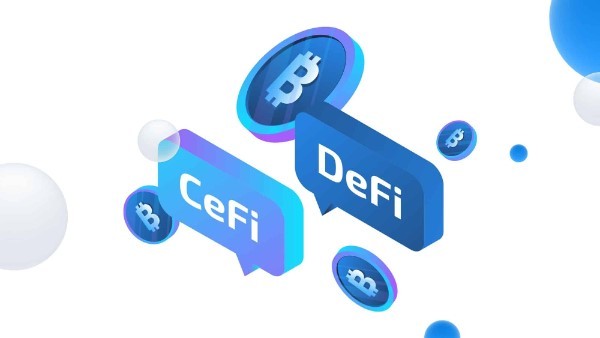
The Distincs Between CeFi and DeFi
Security
Even though CeFi platforms make every effort to maintain a high level of security, it is not uncommon to hear of a major exchange being hacked. Chainalysis said at the start of the year that 2019 witnessed the highest number of hacking assaults in history, however the amount of money taken had decreased significantly from 2018.
In centralized finance, cyberattacks result in profits.
Decentralized exchanges do not pose this danger, since the platform does not keep user cash. The only thing that consumers need pay attention to is the DeFi project’s code and consensus mechanism. Occasionally, the underlying technology may have flaws or other difficulties
>> Read Also: Cryptocurrency Explained: What Is A DEX—Top Best DEX On Market
Speed
CeFi and DeFi both have a reasonably fast execution speed, albeit this varies by platform. The majority of exchanges can execute market orders very instantly.
Prospect CeFi systems are emulations of conventional banks that have previously proved and continue to showcase their promise. DeFi, on the other hand, is just getting started.Numerous industry observers expect a massive revolution in which DeFi services increasingly supplant conventional banking services, posing a danger to the financial system.
Nonetheless, both DeFi and CeFi have a role in the crypto market today. They facilitate speedier transactions, provide high rates, and invest in community infrastructure.
Top Best CeFi Platform On Market
After going through the definition of what is CeFi, now let’s move to the next part of the best CeFi Platforms in the markets that you could take into consideration. These may include
Nexo
Nexo is amongst CeFi examples. Cryptocurrency loan provider Nexo is a well-known name in the industry. Founded in 2017, the company now has assets under management of $13 billion, as well as more than 2.5 million users worldwide. When it comes to crypto loans, Nexo is an excellent way to get started. This is because the design is so straightforward.
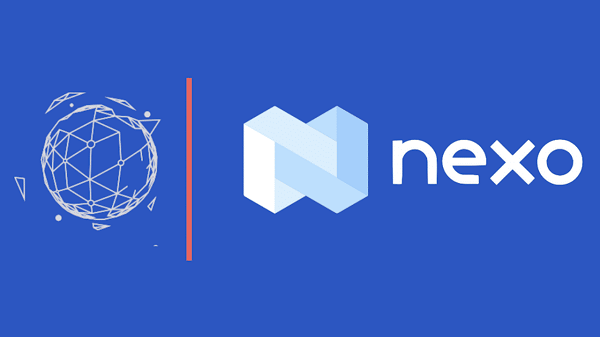
Nexo
For various digital assets, Nexo offers Annual Percentage Yields (APY) ranging from 6% to 12%. Fiat currencies, such as the US dollar, the pound sterling, and the euro, earn interest rates of up to 12%.
Using Nexo’s “loyalty level,” you may earn up to 12% in stablecoins, which is the highest rate in the system. The amount of NEXO, the platform’s native cryptocurrency, in your account influences this. Customers are more likely to remain loyal if they are offered more incentives, such as more frequent free bitcoin withdrawals, larger savings rates, and so on.
BlockFi
One of the most famous CeFi examples is BlockFi. It was founded in 2017 and is another CeFi example that is straightforward to use. Stablecoins like Tether (USDT) and DAI earn an APY of up to 8%, while Bitcoin and Ether earn a 5% APY. Your digital assets earn interest on a daily basis and are paid out each month.
Stablecoin and crypto withdrawals are both free for BlockFi subscribers each month. Customers will have to pay different fees depending on the kind of digital asset they are withdrawing.
Celsius
After a lot of hard work, Alex Mashinsky (check out the link for more information about him) founded the company back in 2017. With over $22 billion in cash and over 1.4 million members, Celsius is one of the most well-known CeFi lending platforms.
Coin loans, coin borrowing, and cryptocurrency payments are all available in Celsius. A credit card and switch functionality are also being worked on. In this article, we’ll concentrate on retail use cases, although Celsius also provides capabilities geared exclusively for companies. Then there’s Celsius’s own token, the CEL, which we’ll discuss in more detail later.
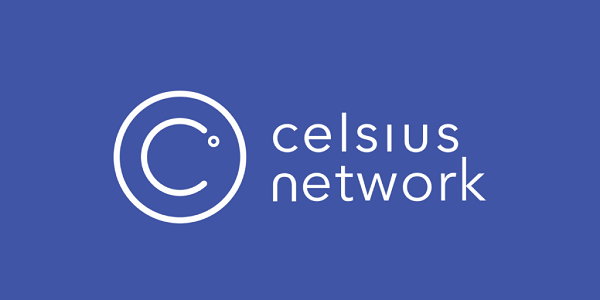
Celsius
YouHodler
One key distinction sets the borrowing side apart from the others. YouHodler enables you to borrow up to 90% of the value of your collateral, whilst other services limit you to a maximum of 50%. You may use any of the top 20 currencies as collateral.
Swissborg
Swissborg, like YouHodler, represents a significant departure from the prior platforms in the Swiss blockchain ecosystem. The yield earning opportunities on this unified financial platform is an added advantage. Founded in 2017, Swissborg has more than 500k members and $1.6 billion in the platform’s wallet.
Risks Involved With CeFi
Each CeFi product and provider is unique, therefore your deposited cryptocurrency may be used in ways that carry greater or lesser risk. It’s critical to do due diligence and understand how your cryptocurrency is utilized, how the return you get is created, and what dangers are involved.
Bear in mind that crypto deposits are not presently covered by the government-backed insurance that covers regular bank accounts. (However, Coinbase’s CeFi loan product includes a guarantee on the principle.)
Certain CeFi providers may temporarily seize your primary. However, Coinbase enables you to access your USDC at any moment.

What Are Risks Related To CeFi?
Not all stablecoins are equal. USDC, for example, is built on open-source code that anybody may see. USDC is backed by dollar-denominated assets in segregated accounts with US-regulated financial institutions that are at least equivalent in fair value to the USDC in circulation.
USDC may be purchased on exchanges like as Coinbase and stored in any Ethereum-compatible wallet. There are no costs associated with converting US dollars to USDC. USDC was launched as a result of a cooperation between Coinbase and Circle, who co-founded the CENTRE Consortium.
FAQs About CeFi
What Is CeFi In A Short Explanation?
Since there are no third parties or central authorities in CeFi, your financial transactions are subject to scrutiny. CeFi is short for Centralized Financial Services, which is the name of the company. The term “centralized” here refers to the fact that all of your financial transactions are handled by a single entity. A financial institution, a broker, an exchange, or even a government agency might serve as this authority’s representative.
CeFi, in a nutshell, is a chain of applications controlled by a single entity.
Which Is Better For Your Money: DeFi or CeFi?
It’s hard to argue that there aren’t strong initiatives in both sectors, but from an investor’s standpoint, DeFi has the upper hand. The native tokens of cryptocurrency exchanges might provide direct exposure to CeFi initiatives. The most popular CeFi tokens now are Binance Token (BNB), Crypto.com Coin (CRO), and Huobi Token (HT). Given that Ripple is a centralized firm, XRP might be considered a CeFi component.
As a result, you now have a far wider range of DeFi alternatives to pick from. This is particularly true given the fact that the industry is still in its infancy.
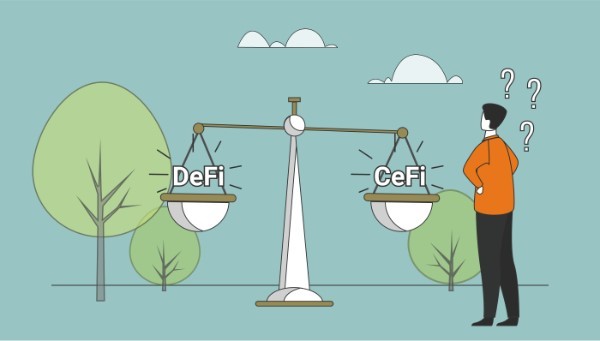
What Is The Purpose Of CeFi?
What Is The Purpose Of CeFi?
Because they safeguard your cryptocurrency while it generates income, the CeFi platform is often referred to as your digital assets ‘custodian.’ As a result, if the Centralized Exchange where your bitcoin is held is hacked, your assets are at danger.
Closing Thoughts
Financing at the local level and at the national level have the same end goal: to increase efficiency. They’re hoping to make bitcoin trading more accessible to the general public and boost trading volume in the process. In spite of this, the aims of these two ecosystems are unique.
As a result of this, you can rest assured knowing that your money is safe with CeFi. Investors using conventional currencies may also trade in cryptocurrencies. CeFi exchanges, on the other hand, provide customer support that DeFi exchanges do not. It’s also a goal of DeFi to keep out unwanted visitors. As a result, investors no longer have to deal with a middleman in order to carry out their plans.
The pros and cons of each of these models are clear. There are no hard and fast rules when it comes to what an investor needs. DeFi is the greatest choice if you are concerned about privacy and transparency. However, if you’re looking for trust, risk sharing, flexibility, and additional investing options, CeFi is the best option for your financial future.





